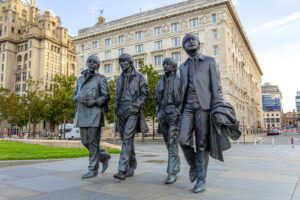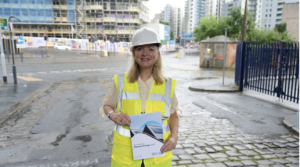Four steps to shift decision-making from town halls to communities
 A new guide sets out four steps for help local councilors work more closely with their communities. The Local Government Information Unit and Local Trust jointly published the guide to inspire councillors to involve and empower local citizens.
A new guide sets out four steps for help local councilors work more closely with their communities. The Local Government Information Unit and Local Trust jointly published the guide to inspire councillors to involve and empower local citizens.
As local councillors contend with increased pressures from budget cuts and the potential upheaval of local government funding, and citizens feel the strain as local services are hollowed out, this guide urges decision-making to shift from town halls to local communities.
Community collaboration can be a reviving force for local democracy but councilors need to be prepared to take a backseat at times, and to lead with advise and support, the report says.
The four steps to community collaboration are:
- Sow the seeds of activism
Councillors can help identify the residents who have ideas for local change, or help mediate between different community groups. What matters most is to get across the message that residents are welcome to sit around the table and be listened to.
Case study: Councillor Vince Maple in Medway Council supported the Luton Arches Big Local project to help their ideas for a local park come to fruition
- Encourage true community ownership
Putting community collaboration into practice is not easy and requires a radical shift between council and resident. Councillors are well placed to ensure this cultural shift takes place and move collaboration beyond a tick-box exercise. Councillors can be the link, helping the council formulate strategies in collaboration with charities, service users and others.
Case Study: Councillor Jonathan Slater at Lewisham Council helped connect a third sector mental health forum with local decision-makers and the local CCG to work together on a mental health strategy.
- Lend a hand
Once local projects get up and running councilors can help smooth the process, using their local links to draw individuals together and help groups navigate funding options. Showing support for local activists and organisations helps them feel confident to approach the council when needed.
Case study: Councillor Joy Allen at Durham Council supported a local charity in Bishop Auckland to host a fortnight-long open-air performance telling the story of England’s history (pictured). She helped negotiate when the planning department initially refused permission and used her local contacts to source 1500 local volunteers.
- Spread the word
Councillors can provide a link in communication between the council and people, ensuring that local people’s ideas and actions are known within the council and fed into the decision-making process and also ensuring that new policies will not impact negatively on citizens.
Case study: Councillor Mark Ereira of Suffolk Council helps supports local people to help them set up environmental projects. He helped the community set up a charity to clean up the River Lark and supported another group by preventing a piece of meadowland from being developed.
- Read the full report here.















